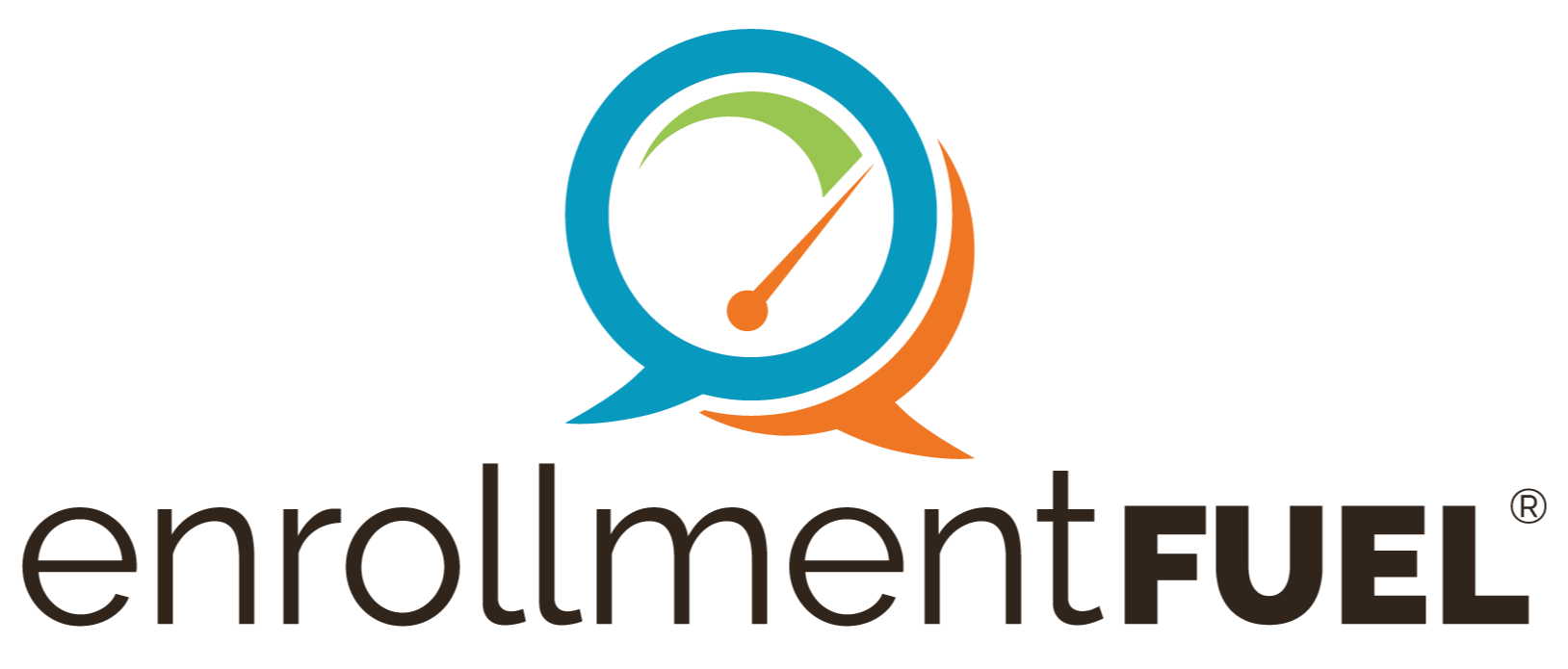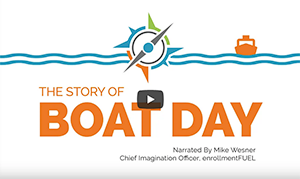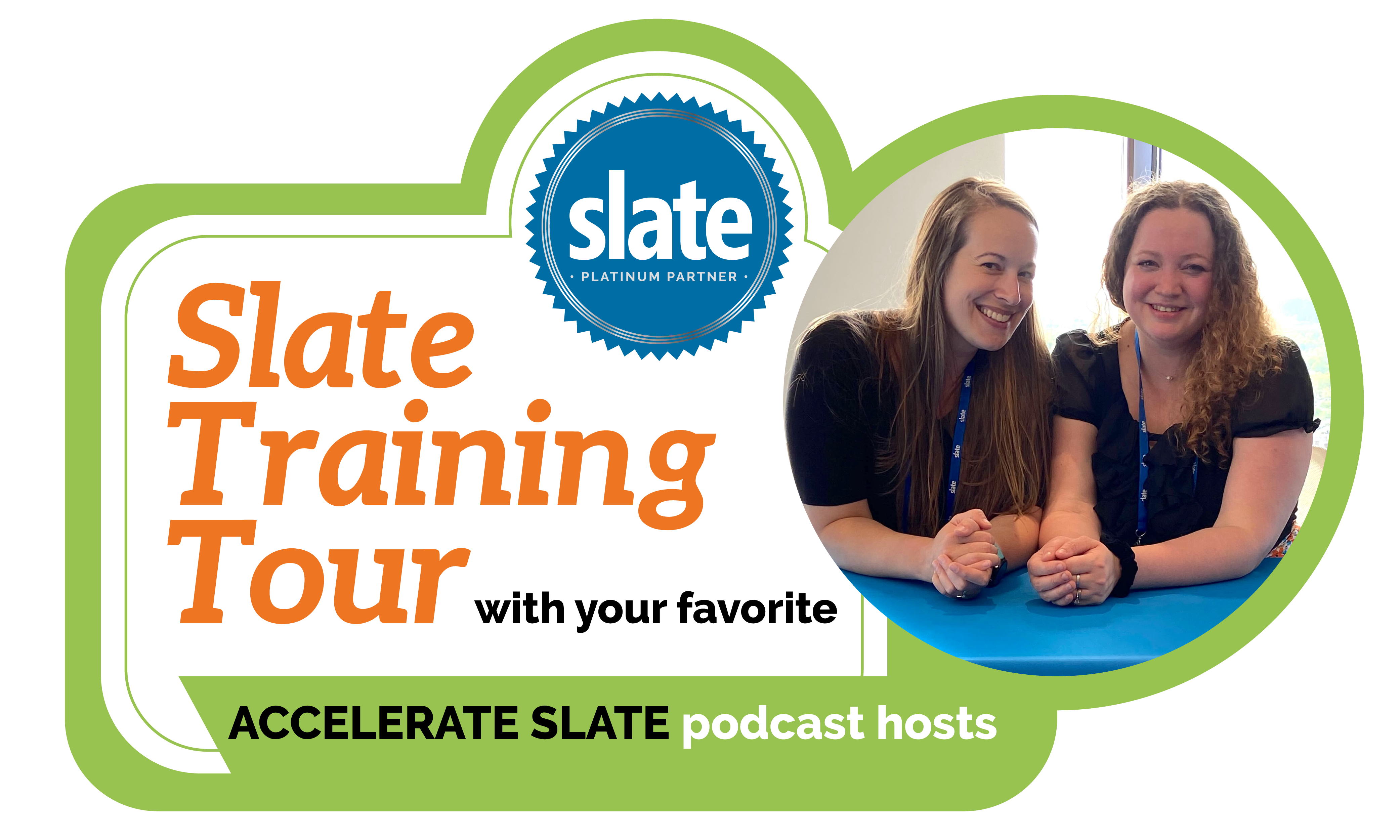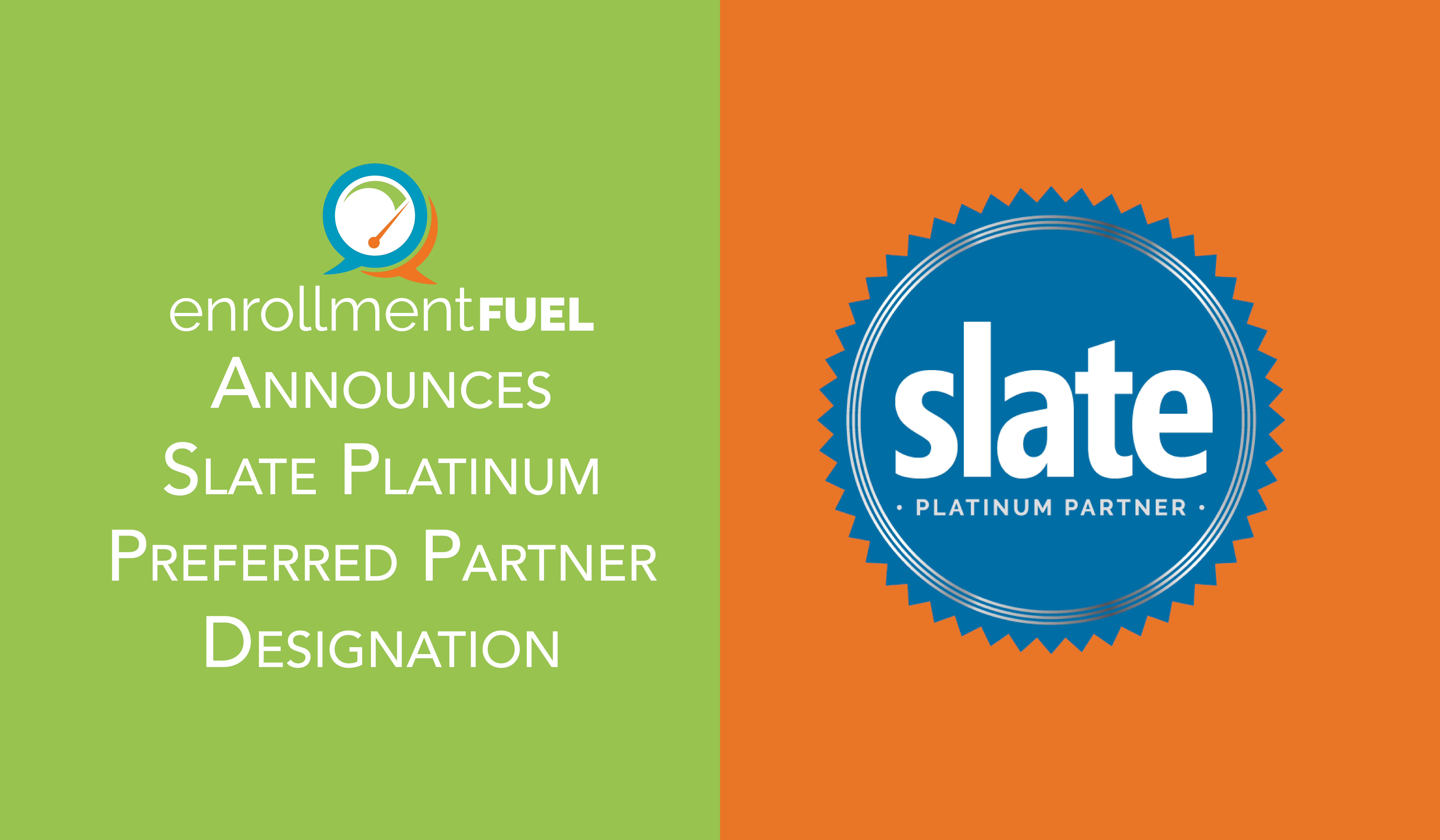After nearly 30 years in enrollment management, I’m going to say it: successful recruitment starts with good data. Successful recruitment ends with a good relationship. But it starts with data. This sentiment isn’t always popular around the enrollment community. In fact, I know I’ll get some terse email responses for just saying it. However, attending my second Slate Launchpad in the last four years reminded me of the importance of data and systems.
Slate is the CRM software developed by Technolutions, and Launchpad is a hands-on group training session to familiarize users with Slate. enrollmentFUEL is proud to be a Slate preferred partner. I, along with several members of our team, attended Launchpad to improve our skills so we could do a better job of assisting our clients.
Let me give a quick example of what I mean when I say it all starts with data. Back in the good old days when I started my career in admissions, we went to college fairs and visited high school guidance offices to meet with students. They filled out cards with personal information. We brought the cards back to the admissions office and transferred the information onto paper files. Using the information we were given, we called and sent direct mail. Students visited, or we talked with them on the phone, and we built relationships through direct personal contact.
Today, we need a more sophisticated approach. Fewer students are coming to college fairs. When they do stop at our booth, we get little more than the basics – a home address, academic and co-curricular interests, and graduation year, leaving us to fill in the rest of the blanks.
Gen Z is very private and very careful about their information. Gathering information and using this prospect intelligence requires an intuitive, calculated, and proactive data collection system. Once information is collected, it must be managed and put to work in an effective response system that makes use of all the information we gather.
Another thing to remember about Gen Z is that they are digital natives. They understand institutions are collecting data about them, and they expect you to get it right. I saw this when my youngest son was being recruited. His name is Andrew. He likes to be called Andrew or Drew, but never Andy. He would never fill out a form that said his preferred name is Andy. Several times during his college search, colleges sent him materials addressed to Andy Fedje. He’d look at those materials and instantly throw them away. Once, he told me it was because that data error made it obvious that the school was lying about the whole “we’re a small college that knows our students” tagline. If they did know their students, then they would have known not to send mail to Andy. On one college visit, there was a “Welcome Future Student” sign in the parking lot, and it said Andy Fedje. He wanted to leave immediately, and it took some convincing to get him to give the school a chance.
The moral to this story is the data needs to be accurate, or the relationship may not even start.
At Launchpad, instructors illustrated how to use the technology to capture student data, monitor prospect engagement, develop a responsive and intentional communication plan, and manage ongoing prospect activity. There are many different CRMs being used by schools, and all provide colleges with the technology to build a data “story” for a prospect and use that information and insight to build a relationship.
Here are essential functions of a CRM. Keep in mind, if you don’t have these, there’s a good chance your competitors do.
- Simple data loading and migration: Bringing in data, pushing out data, and transferring data from one system to another should not be rocket science.
- A responsive and intentional communication flow: Your CRM allows you to have two types of conversations with students – transactional (deadlines, processes, reminders), and transformational (wooing your prospects, showing outcomes, conveying your college's stories, and showcasing the soft side of building the relationship with prospects and their parents).
- Automation: I call this recruiting while you sleep. Your system must be able to function on its own once you have it built.
- Access: The best CRMs are easy to use. Whether you are using it daily, or you have a faculty member sending emails to their department prospects now and again, your CRM shouldn’t be so complicated that it requires mad skills and constant training.
- Mobile interface: Being able to access your system from a laptop or a mobile device (for both the admissions office and the prospective student) is essential.
- Reporting and modeling: A CRM must be able to translate data into meaningful reports, and those reports must be easy to interpret, or they will not be used.
- Connected to your website: There is a lot of intelligence to glean from your website, such as what pages your prospects are visiting. It is also the place where your application resides and where prospects access personalized portals. Your website is a forward-facing data collection point, and your CRM is the holding tank for the information you gather.
After attending Launchpad, I would recommend that every enrollment leader take time annually to review their CRM functions and assess its effectiveness. Remember, you should not be working for your CRM. Your CRM should be working for you.
As a Slate Preferred Training Partner, we’re in the business of helping our schools get the most out of their CRM investment. If you would like to discuss how we can help you implement or develop your system to its fullest, please contact me at jay.fedje@enrollmentfuel.com.
Related Articles
Custom In-Person Higher Ed CRM Slate Training | enrollmentFUEL
Dive into your Slate adventure and attend the in-person Slate training sessions led by the hosts of...
Higher Ed Blog Articles | 5 Reports to Build in Your Slate CRM
Enrollment Management leaders need data to share with campus partners, set goals, and motivate...
Just Like Daylight Savings Time…It’s Ok to Fall Back
Walking up one flight of stairs, I entered my office and sat down. I could literally hear my heart...




